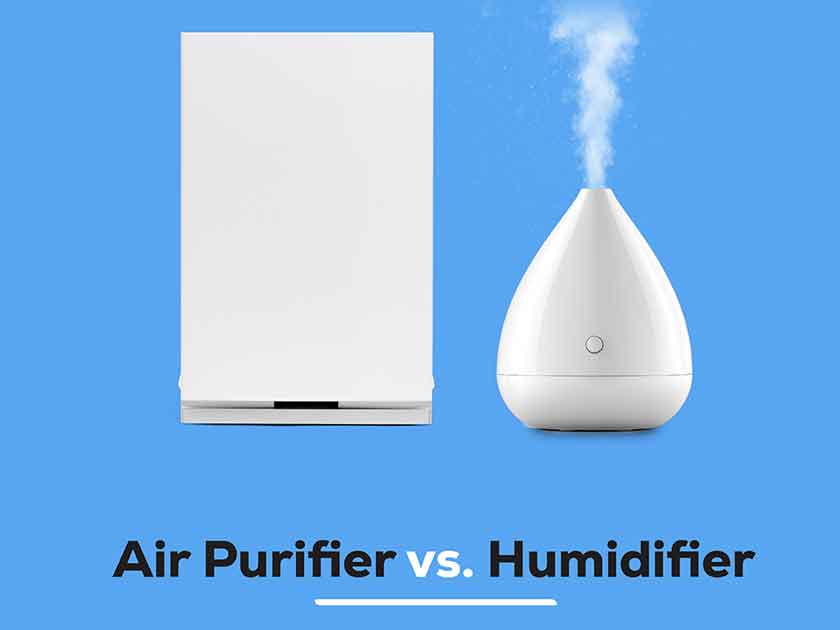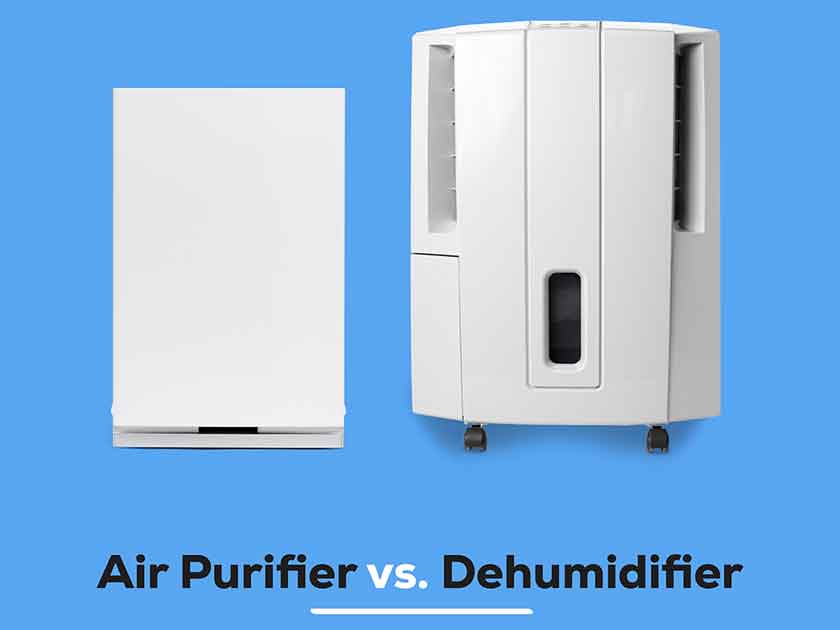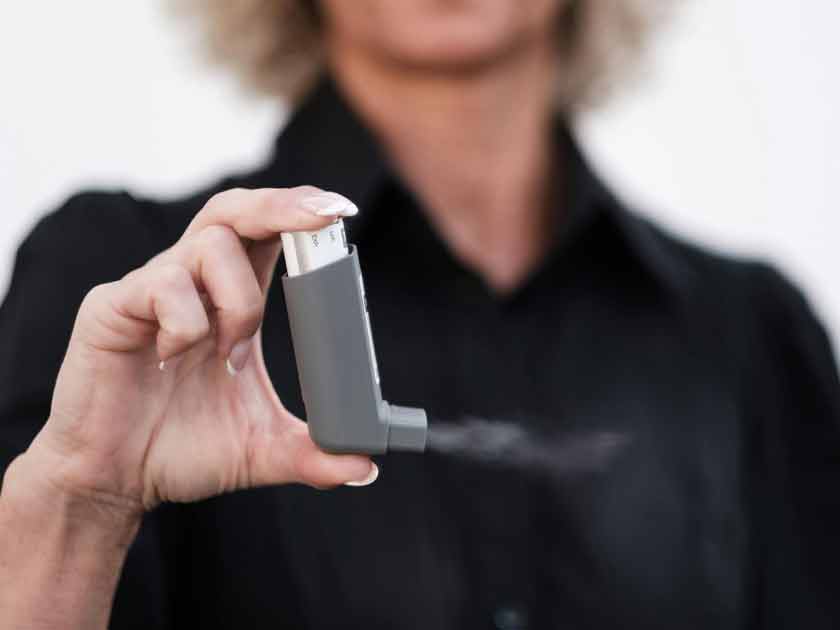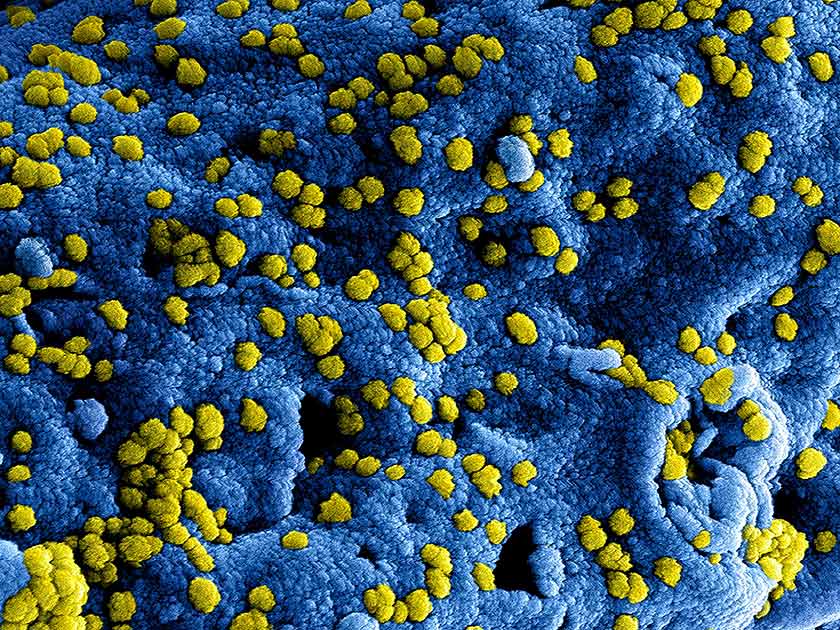
Summary
- Air purifiers remove airborne pollutants, allergens, and microorganisms to improve indoor air quality and support respiratory health.
- Humidifiers add moisture to dry air, easing nasal irritation, dry skin, throat soreness, and preventing damage to wood and static buildup.
- Using both together provides cleaner, properly humidified air for optimal comfort and health.
- Proper device selection depends on your goals: air purifiers target pollutants, humidifiers target low humidity issues.
- Regular maintenance is essential for effectiveness: air purifiers require filter changes, humidifiers need cleaning to prevent mold and bacteria.
If better indoor air quality has been on your mind, you’ve probably been doing your homework on how to achieve that goal. Two items probably came up in your search: an air purifier and an air humidifier. Both can have positive effects on the air you breathe at home, but they are not the same. Let’s take a look at buying an air purifier vs humidifier for your home.
What Is An Air Purifier?
An air purifier is a machine designed to capture and remove airborne pollutants. Depending on the filter media it may capture particle pollutants, gaseous pollutants, or both. Air is drawn into the air purifier where air filters are mounted (typically some level of HEPA air filters) that the air passes through and is cleaned. The clean air is then sent back out into the room.
Air purifiers can be portable or integrated into a HVAC system. Most use some sort of filter, but some use other means (such as ionization) to help remove pollutants from the air. Mechanical filters (such as a HEPA pleated filter) use tiny interwoven fibers to capture particles from the air. Chemical filters use materials that have highly adsorptive properties (like activated charcoal) to remove volatile organic compounds (VOCs) and other chemicals from the air.
An air purifier helps by removing harmful pollutants, allergens, and illness causing microorganisms from the air. Using an air purifier helps at-risk groups like those who suffer from asthma or chronic obstructive pulmonary disease (COPD). Using an air purifier can also lead to more restful sleep, better productivity, and better overall health. The air purifier must be maintained routinely in order to continue cleaning the air efficiently.

What Is A Humidifier?
A humidifier is a device that adds moisture to the air (humidity). They are used to increase moisture levels in the air when relative humidity is low. They are also used to help conditions such as nasal congestion during illness.
There are four common types of portable household humidifiers:
- Steam
- Evaporative
- Ultrasonic
- Impeller
There are also whole-home central humidifiers that work along with the existing home HVAC system. In areas such as an arid climate or long, cold winter where home heating leads to dry air conditions indoors a whole-home humidifier can be a worthy investment for comfort.
Dry air can drain the body of moisture over time. Higher indoor humidity levels can help relieve dry skin, reduce nasal passage irritation, and ease a scratchy throat. Experts recommend keeping indoor humidity levels between 30% and 60% for comfort, health, and mold control. Maintaining the proper indoor humidity levels also helps reduce static electricity and prevents wood from shrinking, cracking, or warping.
Using An Air Purifier With A Humidifier
Using a humidifier along with an air purifier is not typically an issue. Most air purifiers are designed to work across a wide range of humidity levels. You get clean, humid air for better indoor air quality. In the case of some whole-home air purifiers there may be installation location specifications regarding the humidifier location. This is to prevent moisture saturated air from affecting the air purifier filter or internal mechanisms.
Choosing Between An Air Purifier and A Humidifier
Adding an air purifier to your home is always a good idea, while adding a humidifier only makes sense when indoor moisture levels are consistently below 40%. If you are trying to decide whether to buy an air purifier or a humidifier, there are few things to consider.
What Is Your Goal?
Obviously you are looking to make the air in your home better, but what are you trying to improve?
If these are your goals, you need an air purifier:
- Remove airborne chemicals
- Remove airborne allergens
- Reduce allergic reactions
- Remove airborne fine particulates & pollutants
- Remove smells
- Remove pollution that seeps in from outside the home
- Improve indoor air quality
If these are your goals, you need a humidifier:
- Increase indoor humidity levels
- Easy dry nasal passages
- Relieve sinus congestion
- Reduce dry skin
- Relieve throat soreness
- Reduce coughing
- Prevent wood from cracking/warping
- Reduce static electricity
There is some overlap. Both an air purifier or a humidifier can help with these health needs:
- Help reduce allergy symptoms
- Improve sleep quality
- Reduce respiratory illnesses
Adding humidity to the air can also potentially lower utility bills in the winter where humid air holds heat better than dry air. The humid air leads to less moisture evaporating from your skin, which makes it feel cool. This means you can lower the thermostat heat settings a little and not feel as cold.
What An Air Purifier Won’t Do
An air purifier does not change the humidity of the air. It can remove things from the air, but it will not add moisture to the air.
What A Humidifier Won’t Do
A humidifier adds moisture to the air, that is all. It will not remove chemicals, mold spores, pet dander, or any other particles from the air. An evaporative-type humidifier may catch some things in the wick, but it is not by design (and will actually impede airflow).
Maintaining An Air Purifier
An air purifier will need filter replacement on a regular basis. Some pre-filter may be cleaned, while main filters (like a HEPA filter) must be replaced. Most air purifiers have a filter change reminder to help keep the correct maintenance schedule.
Maintaining A Humidifier
A humidifier needs to be cleaned based on the owner’s manual schedule. Any buildup of minerals or mold must be removed. Ideally distilled water should be used to reduce the possibility of mineral accumulation. Portable units should be completely drained and thoroughly dried before being put into storage.
Matching The Unit To The Space
Start by measuring the space you want to humidify or clean to get the total cubic footage. To pick the right size air purifier for a space you need to know the unit’s Clean Air Delivery Rate (CADR). The CADR will be specified in cubic feet per minute. You want an air purifier that can filter all the air in a room at least four times per hour.
To pick the right size humidifier for a space, unfortunately there is no standardized measurement, but most humidifier manufacturers will state a recommended square footage for their unit. The main limiting factor for a humidifier is the size of the water tank, which is why some whole-home humidifiers are connected to the home’s water supply system.
Types of Air Purifiers and Humidifiers
It should come as no surprise that there are more than a few types of air purifiers and humidifiers. Let’s dig a little deeper into the different machines and how they work.
Air Purifier Types
Here are the most common types of portable and whole-house air purifiers on the market:
-
Mechanical - This type of air purifier uses mechanical air filters to clean the air. The filter media is constructed of thin fibers (made from paper, plastic, even fiberglass) in multiple layers to create a fine screen that catches particles. The particles can be captured via inertia, interception, impaction, or electrostatic attraction (like a magnet). HEPA filters fall under the mechanical type. Most portable air purifiers fall under this category.
-
Adsorption - This type of air purifier most commonly uses activated carbon filters to remove chemicals, odors, and other volatile organic compounds (VOCs) from the air. Adsorption is not to be confused with absorption. Adsorption happens just on the surface, while absorption permeates the entire material. An adsorption air purifier relies on the immense surface area of a material such as activated charcoal to remove chemicals from air passing by it.
-
Ultra-Violet (UV) Light - UV-C light air purifiers use short-wave ultraviolet (UV-C) light from a special light source (either a bulb or LED) to deactivate microorganisms. The UV light disrupts the DNA/RNA inside the microorganisms so they cannot reproduce. The UV light must be shielded to prevent accidental exposure to other living creatures. This type of air purifier cannot physically remove particles from the air. The UV light source must be changed over time as it becomes less effective.
-
Ion Emitting - Ion emitting electronic air cleaners use a high-voltage ion generator (ionizer) to make negative ions. The negative ions create a negative charge on airborne particles which are then attracted to nearby surfaces (like the filter). One version of ion emitting air purifiers uses electrostatic precipitators to apply a charge to incoming particles. The particles are then attracted to oppositely charged collecting plates. These plates require periodic cleaning as they collect particles. Unfortunately these kinds of air purifiers often emit ozone, which itself is an air pollutant.
-
Ozone Emitting - Ozone can be used as an air purifier, but much care must be taken. Ozone is effective at killing microorganisms and removing smells. It is also harmful to any other living things in the room. Ozone air purifiers can also create other harmful byproduct compounds. In general ozone air purifiers are for use only in special situations.
Humidifier Types
There are four common types of portable household humidifiers:
-
Steam - Also called “warm mist humidifiers” these humidifiers use a heat source to boil water, turning it into steam. This type adds heat to the room during the process. A side benefit is that the steam output is sterilized. To prevent mineral buildup over time it is recommended to use distilled water.
-
Evaporative - Evaporative humidifiers use a fan to blow air through a wick-type material that is saturated with water. The moving air causes the water to evaporate. These require maintenance to prevent mold growth and mineral buildup.
-
Ultrasonic - Sometimes called “cool mist humidifiers” these humidifiers use an ultrasonic transducer that vibrates at extremely high frequencies while in contact with a water reservoir. The high-frequency vibrations turn the water into mist without using heat. Popular due to low energy usage and a noise level that is nearly silent. Unfortunately ultrasonic humidifiers can increase airborne PM2.5 particles created from minerals in tap water.
-
Impeller - This humidifier is an extremely simple design in use for decades, but not as popular now. A spinning fan or disc slings water at high speed against the inside of the unit. The water is broken down into tiny droplets. Noise can be a problem.
Now that you know the different types of air purifiers and humidifiers you should have a better idea of which one you need (or both).
Health Benefits & Drawbacks
Both air purifiers and humidifiers can have positive health benefits when used in your home. But there can be drawbacks too.
Air Purifier Benefits
There are numerous health benefits to using an air purifier to remove airborne pollutants. Respiratory problems such as bronchitis, asthma and allergies can all be reduced. Rates of virus infectiousness can be reduced by using an air purifier with a mechanical HEPA filter. An air purifier can help remove airborne particles that can irritate young lungs and lead to respiratory issues. The Intellipure Compact removes up to 99.97% of allergens, mold, and viruses from the air. Intellipure's proprietary DFS technology meets or exceeds the HEPA standard and is perfect for rooms up to 500 sq ft.
Air Purifier Drawbacks
There are very few, if any, negative points to using an air purifier. The main issue is related to air purifier designs that generate ozone during their operation. Since ozone is a pollutant, the air purifier may end up creating air quality issues itself. An air purifier is only effective if maintained on a regular basis.
Humidifier Benefits
Dry air can have a negative impact on lung tissue as well as upper respiratory issues. It can lead to increased asthma symptoms, sinusitis, bronchitis, and nose bleeds. By using a humidifier to increase indoor humidity levels you can help protect sensitive mucous linings along the airways. Other benefits of proper humidity include reducing problems with dry skin, better sleep, reduced eye irritation, and reduced chest congestion.
Humidifier Drawbacks
Indoor humidity levels need to be monitored when using a humidifier for an extended amount of time. High humidity and warm temperatures create ideal conditions for mold spores to take hold and create a mold colony. Ideally humidity levels should be kept below 50%. Higher humidity levels can also encourage dust mites, which can make allergies even worse. As previously mentioned some humidifiers can actually cause an increase in airborne particulates unless used with distilled water. A humidifier must also be cleaned to prevent buildup of minerals or mold growth.

Air Purifiers and Humidifiers for Infants
Little developing lungs are especially sensitive to indoor air quality. Air that is too dry or polluted can lead to respiratory discomfort or even respiratory issues.
Air Purifiers For Babies
There are all kinds of harmful airborne pollutants in our home which is why it is a good idea to use an air purifier, especially in children’s rooms. Air purifiers that can remove ultrafine particles and airborne viruses (like those equipped with HEPA filters) are preferred to help protect tiny lungs. By using an air purifier you are reducing the chance for allergic reactions, nose & throat irritation, and pollutant exposure. Ideally choose an air purifier with an activated carbon filter which can remove volatile organic compounds (VOCs) from the air. VOCs can come from off-gassing plastics, household cleaners, even new carpet.
Air Purifier Safety
Most popular air purifiers are designed to shut off to prevent access to the fan blades from tiny fingers. Stay away from ozone generating air purifiers. Keep the air purifier and power cord out of the baby's reach from the crib.
Humidifiers For Babies
Keeping the ideal humidity level in a nursery helps keep young lungs working and other issues at bay. Dry air can lead to dry skin, coughing, nasal congestion, even a sore throat. If your baby is fussy when the humidity drops, it could be time for a humidifier. Ultrasonic humidifiers (also known as a cool mist humidifier) are popular due to their quiet operation and relative safety (when used correctly).
Humidifier Safety
Keep all humidifiers out of reach of children during operation. This is especially true for steam humidifiers which can cause burns. Do not allow the room humidity level to stay above 50% for long periods of time, as this can allow mold growth and encourage dust mites. Ultrasonic humidifiers must be used only with distilled water, not tap water or mineral water. The same caution should be taken with impeller-type humidifiers, but their noise level makes them less popular for nursery use. Keep in mind that whatever is in the humidifier is what will be distributed into the room air, good and bad. Make sure your water source is clean and to maintain the humidifier as directed in the owner’s manual.
Using An Air Purifier With A Humidifier
In most cases it is perfectly fine to use an air purifier in the same room as a humidifier. Each machine does a separate job to improve indoor air and will not interfere with the other. Having clean air that is the proper humidity can help improve breathing and alleviate respiratory issues.
While a HEPA filtration level air purifier does remove small particles, bacteria and viruses it does not remove moisture from the air. Ultrasonic humidifiers and evaporative humidifiers work fine with most air purifiers. It is not recommended to use an ion generator type air purifier (which can produce ozone) with a humidifier, as the higher humidity level can create harmful byproducts.
Placement Matters
Both devices can be used in the same room but spaced apart from each other. Do not place the humidifier pointing at the air intake of the purifier. The air purifier should be placed near the middle of the room for the best air circulation. Place the humidifier on a dry, flat surface pointing towards the center of the room (but not at the air purifier).
When using an air purifier mounted to the home HVAC system, it is recommended to place the humidifier in the air flow after the air purifier so that the humid air does not interfere with the air purifier. The main issue is that the air purifier filter media may become saturated with water if it is in the direct airflow path.
Watch The Humidity Level
Care must be taken to not allow humidity levels to climb too high. Air purifiers that use an activated carbon filter become less effective as humidity levels rise. High humidity levels can also affect air purifiers that use UV technology, as the airborne water droplets can actually act like a shield for germs.
Maintaining An Air Purifier Or A Humidifier
Keeping your air purifier and humidifier in top condition helps them work effectively. When shopping for one of these devices keep in mind they do need periodic maintenance, so it is good advice to choose a product that is made for easy service access. Here are a few ways to keep each machine running at its best. Before performing any device cleaning make sure to read the owner’s manual to familiarize yourself with the components of the machine and how it operates.
Air Purifier Maintenance
If your air purifier is going to capture airborne pollutants effectively it is going to need a regular filter replacement schedule. Here’s is how often filters should to be changed for a typical air purifier:
- Pre-filter - 6 months
- Main filter - 12 months
- VOC filter - 6 months
Start by turning off the unit and cleaning the outside of the unit. Hair and dust tend to collect on the air intake ducts, so use a handheld vacuum cleaner brush to gently remove any buildup. If the owner’s manual specifies a method to clean the prefilter, follow those directions.
Next check the main filter. Many popular air purifiers have a notification feature that tells you when it is time to change the main filter, so when it tells you to change the filter it is best to do so. During times of extreme air pollution (like a wildfire) it is sometimes necessary to change the main filter more often to keep the unit working efficiently.
Keeping your air purifier in top condition will keep it fighting indoor air pollution for years to come.
Humidifier Maintenance
Frequent cleaning and disinfecting your humidifier is important for bacteria and mould prevention. Even if you only use distilled water in the humidifier water tank you still need to do periodic cleaning. The EPA recommends cleaning a portable humidifier every three days.
Depending on your type of humidifier the cleaning steps may differ, but some things are the same. Before attempting to clean your humidifier, always unplug it from the wall first. Next empty the water tank and remove any water from the unit (a bathtub or kitchen sink works well as a place to drain the water). Most units are designed to be easily disassembled for access to areas that need to be cleaned regularly. Remove all parts so they can be cleaned. Experts recommend using white vinegar on a clean cloth towel to clean the unit. Start by wiping down the unit to remove any mineral scale, dirt, or other buildup. You may need to use a soft bristle brush to remove any stubborn mineral buildup. Clean each piece individually and set it aside to dry.
Cleaning The Water Tank
Add one cup of water and one cup of white vinegar to create a water treatment solution. Add this solution to the water tank and replace the water tank cap. Slosh the water/vinegar mixture all around the water tank so that it reaches all surfaces. Let the mixture sit for 20 minutes, then rinse out the water tank with fresh water until the vinegar smell is gone.
Cleaning An Evaporative Humidifier
This type of humidifier requires special attention for mold prevention. Since an evaporative humidifier uses a wick-type filter device to disperse moisture, it should be replaced every six months. Whenever the humidifier is turned off for more than 24 hours it should be drained and the filter removed to dry. If the filter appears dirty it can be gently rinsed with cold water (a kitchen sink sprayer works well). Most evaporative humidifier filters have a special coating to prevent microorganism growth, so do not use any cleaning agents or chemicals on the filter itself. Once the filter is dry the unit can be put back together.
Keeping your humidifier clean helps it maintain your ideal relative humidity efficiently and safely.
Air Purifier vs. Humidifier Final Thoughts
Now that you know the difference between an air purifier and a humidifier you can choose which one (or even both) fits your needs. If you are looking for an air purifier you can’t go wrong with the Intellipure Compact. It delivers clean, fresh air for you and your loved ones needs while easily fitting into spaces like your bedroom, nursery, or office. Intellipure proprietary DFS technology removes up to 99.99% of airborne mold, bacteria, and viruses passing through the system. Its 6-stage pre-filter captures volatile organic compounds (VOCs), harmful gases, and noxious odors.

 Allergen Report April 2025
Allergen Report April 2025
 Air Purifier vs. Dehumidifier: Which Is Best For You?
Air Purifier vs. Dehumidifier: Which Is Best For You?




